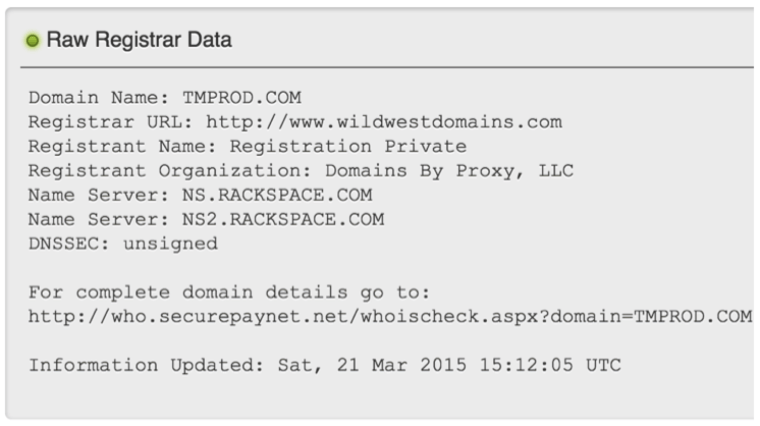
SEO has existed in some form or another for almost two decades, and I’ve had a front row seat to it all. You could say Google and I have had a pretty intimate relationship for the majority of my career; we’ve been through a lot together.
However, much has changed in the past 15 years: keyword utility has been heavily modified, link building for just backlinks became less important (disclosure: I made and lost a ton of cash in the linking business), social links as signals increased, quality content and semantics became increasingly substantial, and most recently,mobile-friendliness became a ranking factor-and that’s just scratching the surface.
There is perhaps nothing more important than an SEO audit when it comes to the health of a website. An in-depth audit provides a roadmap necessary to identify and pinpoint any existing weaknesses within your site. But, with the breadth of data and information available, many SEO’s find themselves lost in the chaos. Plus, there is a ton of bad information out there.
In these situations the best advice I can give is take a deep breath, prepare, organize, and analyze. And most important, always stick to the basics.
Pre-Audit Checklist: Account Access
Talk to the Client
When you are doing a site audit its important you have a certain level of understanding about the business. Communicate with your client so you can get the insight necessary to understand how your recommended SEO strategy will affect their bottom line. What drives conversions? Where do their quality leads come from and what do those consist of? Is their conversion data accurate? What are their goals for the next one, three, and five years? Are there particular keywords they think they should be ranking for – or not ranking for? Why do they think they should rank for those keywords? These are all questions you should ask the client because they are the expert in their own business.
Define Goals
You’d be surprised by how many people seem to lose sight of goals for their web properties. This is one of the most important steps in the any process. Without goals, what do you have to measure the data against? Have an in-depth conversation with your client and make sure to get their goals down on paper and start to establish a timeline that will reflect those goals.
Analytics
Make sure you have admin rights to access the site’s Google Analytics and any other third-party analytics platforms. If you are really lucky, the client may even have a few years of data you’ll be able to utilize during your audit.
Webmaster Tools
This is perhaps the most invaluable free tool – you must get admin access to Google Webmaster Tools! GMT provides specific sets of keyword and query data that Google Analytics does not have. If the client does not have GMT set up yet, you can easily set this up for them by creating and submitting a site map.
Google Adwords
If the client has invested in Google Adwords at all in the past, it may be a good idea for you to take a look at that data. Understanding the conversion data, bounce rate, keywords, and cost metrics can give you valuable insight into the direction you need to take their SEO strategy. Plus, it’ll give you a bit of an “inside look” into their business: who managed it, what they spent, and how it was set up.
Are They Mobile?
It should not be any surprise that more and more traffic is coming from mobile. Google made a historic announcement in late February 2015 stating that in mid-April they would favor sites that are mobile friendly. If that is not enough reason to be mobile-friendly then consider another field of employment. Mobile is not going anywhere but up.
Components of a SEO Site Audit
Have you completed all of the above? Congratulations, now the real work begins! Below, I’ve highlighted the core components of my SEO audit, the data you’ll need to obtain, and what you’ll need to analyze to form your strategy. It is up to you to take this data to the next level and form recommendations for your client. Not all data is created equal and no one can give you advice when it comes to the correct strategy.
Take it step by step, you’ve done the preparation, now you need to organize and analyze the data.
Site Crawl
Start with a site index in Google to compare what is being indexed with your output from a crawl. Go to Google and in the search box type “Site:http://www.MyDomain.com” to review what Google has indexed (and remember it is estimated). I’ve used our domain, TMprod.com for example purposes. You can see that TMprod.com has around 1,150 pages in Google’s index.
Now for a real deep crawl, get all the pieces to the puzzle. Use Screaming Frog or Scrutiny5 and enter the URL you want to crawl. Once it is 100% complete, export into a CSV and/or spreadsheet. Here you will be able to analyze the current state of your clients website.
Organize the data further in the exported spreadsheet. You’ll gain insight on page errors, on-site factors, duplicate meta data, site files, links and more. This should act as the blueprint to your SEO audit.
Site Speed
As you may know, site speed is a huge factor, not just for SERPs but also for visitor usability. Google’s PageSpeed Insights tool allows you to check the speed of the site for both mobile and desktop. It also gives helpful suggestions on how to improve performance.
Pingdom is another great tool to check the speed of the site and what the hold-ups are. The data they provide helps you determine if a library file, font, image, or JS are weighted and causing the sluggish site speed. Often times, third-party JavaScript files can slow down a site. Make sure to vet these inconsistencies and determine whether they are necessary. You can also see below that a JavaScript file from a third-party analytics tool is a little slow in responding for our site.
Domain
What is the domain? Do a history check in Archive.org way back machine to get an idea of what has been done with the domain in question in the past. I like DomainTools.com or a simple run at Who.is. Are there subdomains? Be sure to check the www vs. non-www in Google Webmaster Tools > configuration > settings.
Domain authority is important (some would argue more than others). Is that domain asset being taken advantage of to the fullest extent? Are there other domains associated?
Next you should analyze domain authority and offsite equity. Use tools like Moz, Raven Tools or Majestic SEO to provide more information. Take a look at the client’s backlinks and see where the links are coming from and why. This will help to draw conclusions about the state of the site, its authority and how to improve their strategy.
Site Info
It’s a good idea to know what you dealing with regarding a sites build.BuiltWith.com is a great tool to know pretty much everything about the site operations and associations. Software, server type, libraries, who hosts it, CMS, frameworks, ad networks, encodings, CSS – all great information to know. Also, it tells you more about how the operation is run, how clean the build may or may not be, and potential problems.
Architecture and Site Structure
The site structure defines the hierarchy of the site. It is important that these pages are prioritized to reflect the most important aspects of the business. How many clicks does it take the user to get to what they are looking for? Could this be improved? Do the page names and the navigation work as a part of the SEO strategy? What about usability for a visitor? Are there sitemaps to review and are they effectively and logically organized? Do they match the XML that was submitted for GWT/BWT?
These are all questions that you should be asking yourself when looking at the architecture of the client’s site.
File and URL Names
Many times you’ll see very specific page names and URL’s rewritten from software. Are these readable for the end-user? Would it serve as some type of breadcrumb for me to find my way? Are they logical and reference target keywords?






No comments:
Post a Comment